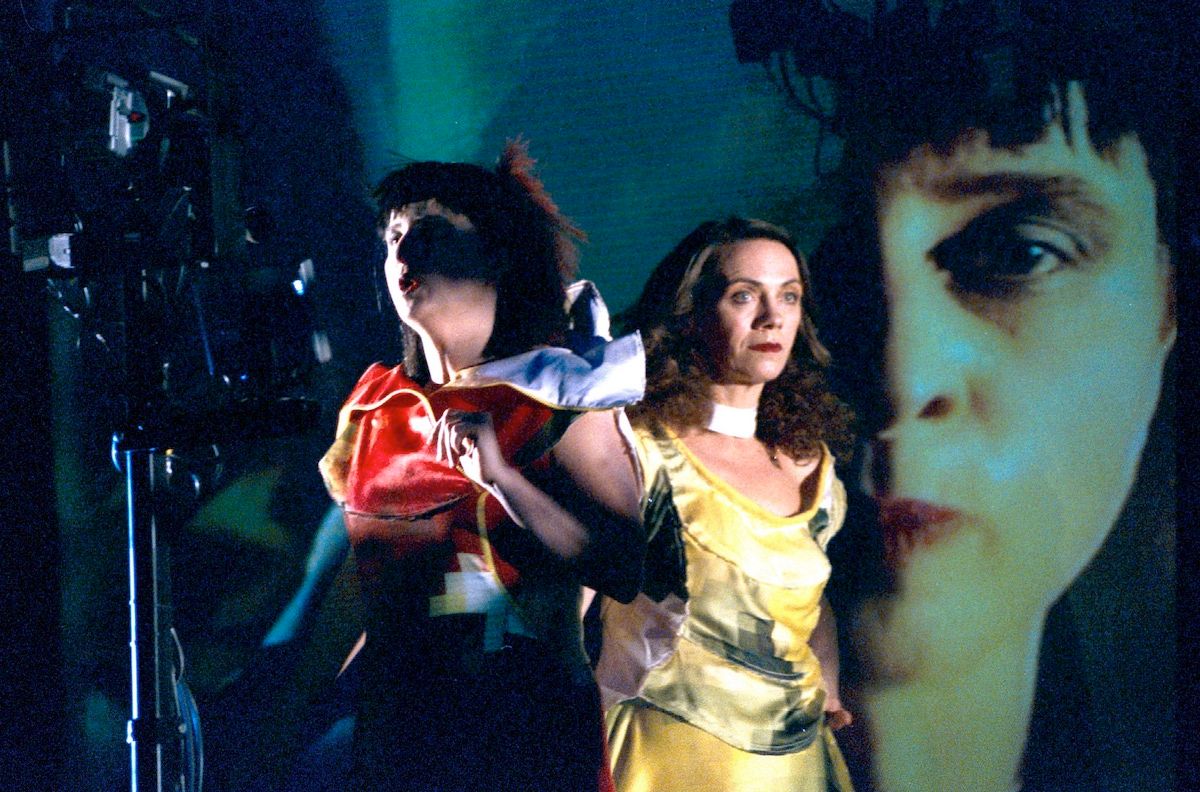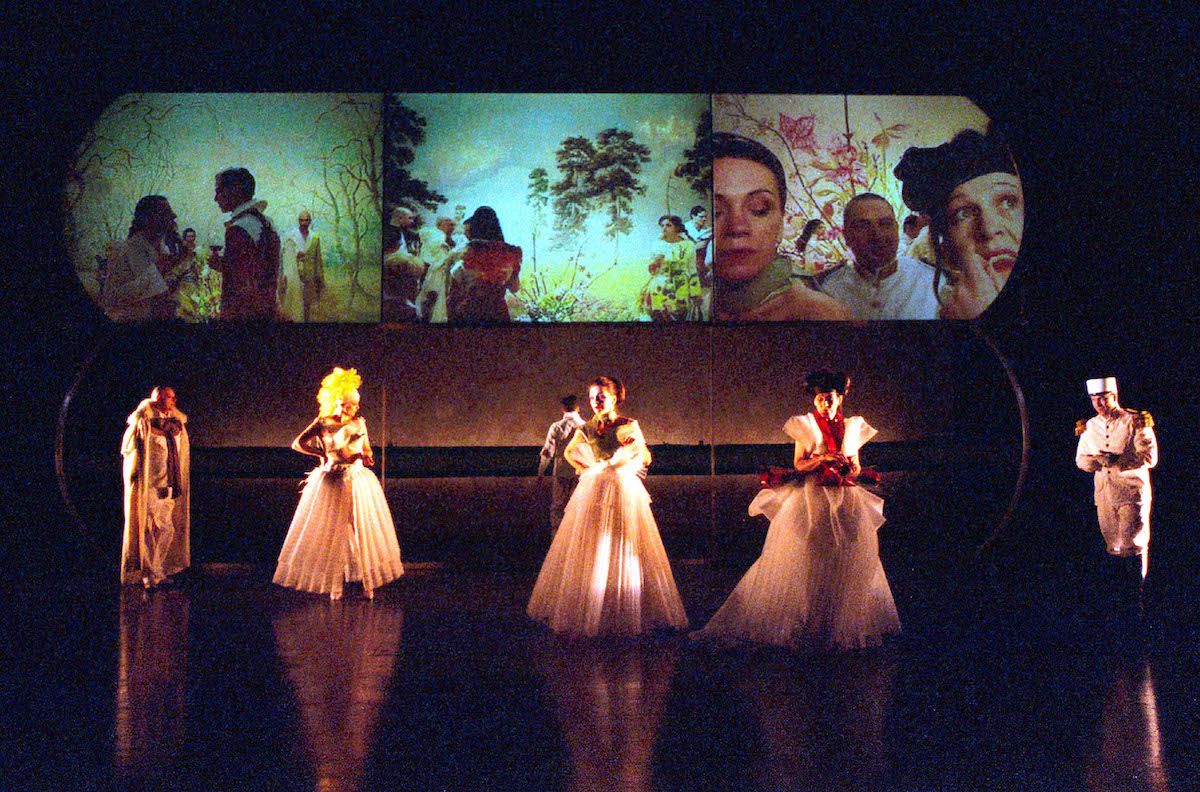

Left: Proust 1. Swann's Way; Right: Proust 3. Charlus' Way
It is impossible to watch or listen without prejudice. You are always biased one way or another. Whether it is because you are a fan of the artist, because you've got a headache or because you just had an argument with your partner, there is always something on your mind.
So when Dutch theatre critics wrote of Guy Cassiers' stage adaptation of Marcel Proust' A la recherche du temps perdu, that this was the best Dutch theatre currently has to offer, that it was a masterpiece and that he was approaching perfection, I was at once curious and skeptical. Curious, because I'm always curious when something receives almost unanimous critical acclaim, and skeptical because I don't think much of Dutch theatre, which I find terribly complacent, but maybe that is true of German, British and French theatre as well.
The problem with theatre critics is that most of them don't travel, they only see what's on show in their home town, be it London, New York, Paris, or Berlin, or their home country. They hardly ever travel abroad to explore a different cultural scene. So when Dutch critics write that, with this production, Guy Cassiers is making history or that he reaches new heights in the integration of live action and video, I wonder whether they have ever seen a production by Frank Castorf, the Théatre de Complicité or Robert Lepage.
The world of art criticism is also heavily divided across disciplines. Dance critics, for example, don't write about theatre and I often wonder whether they ever go to a theatre performance, let alone to a museum of contemporary art. Over the years I've spoken with various dance, art and architecture critics, who were completely oblivious of what is going on outside their discipline and then I'm not even talking about science or economics. This is why I am always a bit wary when I read sweeping claims about a work breaking new ground.
One thing that struck me in the reviews of the Proust cycle by Guy Cassiers, was that critics praised Cassiers' courage to adapt Proust's Remembrance of Things Past (or In Search of Lost Time) for theatre, noticing the challenge of translating its 1,200 or 4,000 odd pages, depending on the edition, into four performances. I myself would have been far more impressed if he had created an evening long performance out of a two line haiku. But that's the thing, people are always impressed by size and quantity and that too, is a form of bias.
When I went to see Proust 1: Swann's Way, the first of the four parts, I hoped my curiosity and skepticism would balance each other out. The moment I sit down for a show or enter an exhibition, I always try to rid myself of whatever else is on my mind. However, I know enough about psychology and the workings of the brain that it is not as simple as that and that, like it or not, unconsciously you are still biased. It's just that when you know why you are biased you can try and take it into account in your judgment.
Guy Cassiers and co-author Eric de Kuyper have focussed their adaptation on a few characters from the novel, Swann, Odette, Madame de Verdurin, Marcel, Albertine, Gilberte and Baron de Charlus. An interesting theatrical decision was to split the character of Marcel in two and have him played both as the adult writer looking back upon his life and as the young man whose life story is being told. This matches the structure of Remembrance of Things Past, which is not told in chronological order but jumps back and forth between past and present.
In Proust 1, we learn about the young Marcel's life in Combray, his relationship with his mother, the visits of Charles Swann and Marcel's first love Gilberte, the daughter of Charles and Odette Swan. The stage is dominated by a large screen made of vertical Venetian blinds, on which both live and recorded video is projected. Sometimes close-ups of the actor's faces fill the entire screen. The live video comes from a number of fixed cameras that stand on stage like some kind of technological sculptures. To the left of the stage a string quartet plays excerpts from Webern, Shostakovich, Kurtág, Debussy and Ravel.
From time to time statements such as "His eyes ... Her Eyes" or "A Knock on the Door" are projected on top of the images. Occasionally, a news burst with historical news headlines reminds one of the period in which the novel is set, while also providing a dramatic contrast with the inner world of Marcel. Visually the text projections don't work and I find it hard to believe Cassiers was satisfied with its present form. I can almost hear the stage directions, "try putting the text at the bottom, no, try a different font, no that doesn't work either, well, then leave it as it is". I would have opted for a different solution, an illuminated news trailer on the stage floor. Never mind that Frank Castorf did that in Endstation Amerika and Forever Young. Both visually and spatially it would have been much better. It would have created more depth on stage and form and content would have merged.
The acting in Proust 1 is very static. Most of the time the actors just stand on stage, talking into their handheld microphones, waiting until the other has finished his or her text. Occasionally, they sit or lie down or walk to another place on stage. There is no running or physical contact. Everything is very subdued. Emotions are expressed through text. This leaves the question what the performance adds to the novel. The stage setting and the music work like the kind of background a fine restaurant provides for a dinner. In a way this seems fitting. The world in which Marcel moves is subdued and is very much like a three Michelin star restaurant. Still, to me the various elements did not yet blend together.
And so it was that the next day, when I went to see Proust 3: Charlus' Way, I couldn't help being more skeptical than on the previous night. Yet, again I was also curious, curious how Cassiers would continue, curious how he would develop his material and whether this time the different elements would merge. Let me say straight away that, except for the text projections, everything that, for me, hadn't really worked in Proust 1 fell into place.
Proust 3 tells of Marcel's entrance into the world of the Parisian aristocracy and his subsequent disillusion with its hypocrisy and superficiality. The emptiness of the salons and characters such as Madame de Verdurin and the priggish homosexual aristocrat Baron de Charlus are convincingly portrayed. It was embarrassing to hear Baron de Charlus speak to another young man the very words he had previously spoken to Marcel and to see the simultaneous reaction of Marcel, who was standing on stage, but not engaged in the scene. You could feel his disenchantment.
With the stage design, the costumes, the shape of the video screen and the vibrant colours in some of the video sequences, Proust 3 touched exactly the right chord. During the salon scenes what looked like large turning chandeliers descended onto stage, circling above the heads of the actors. In one scene we see a video of the characters enjoying a picnic in the park. In another scene the video shows the characters at a Parisian salon. The characters on screen don't talk, their words are spoken by the actors standing on stage, but go through the movements of chatting, laughing and pretending to have a good time. This decoupling of image and spoken word perfectly renders the disillusion and estrangement experienced by Marcel. There is nothing strikingly original about any of this, but it is all very well made and most importantly, it makes for a distinctly theatrical experience.
The final scene was of an intense emotional depth and instantly brought me to tears. Don't ask me why. There is so much that I don't understand.
Postscript
Proust 1 won the Dutch theatre critics award. Proust 3 didn't. This suggests Proust 1 is better. It isn't and all critics agree. The same award simply doesn't go to the same person in the following year, regardless of what he or she has made. Now that's a bias.
Just one final note. This is a Dutch production and the actors speak Dutch. On tour there will probably be surtitles in English, German or French. The performance is carried by the text and I'm afraid that, if you don't speak Dutch, it will not have the same impact, since much of the time you will be reading the surtitles. But in Proust 3 the stage setting will most certainly seduce you.